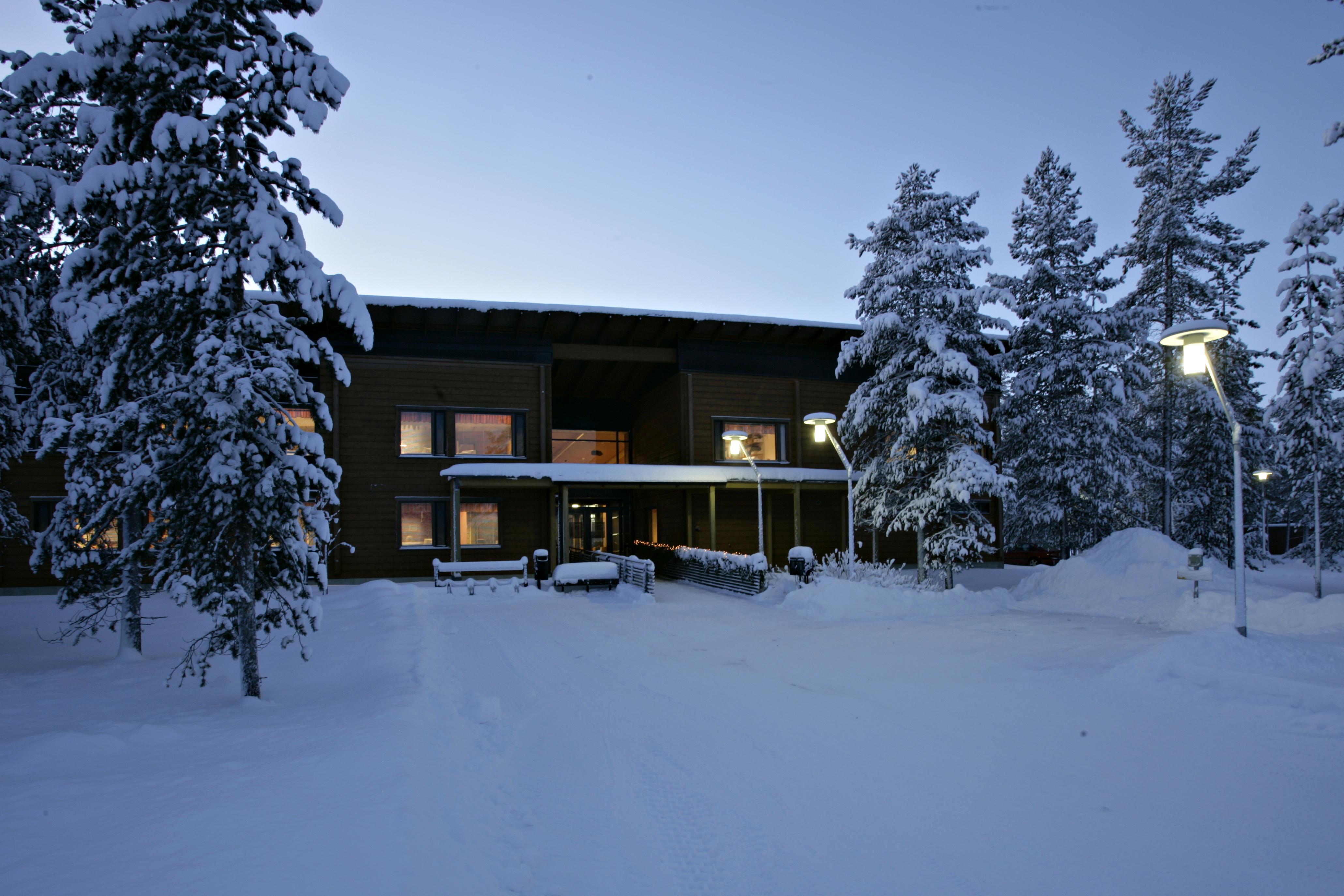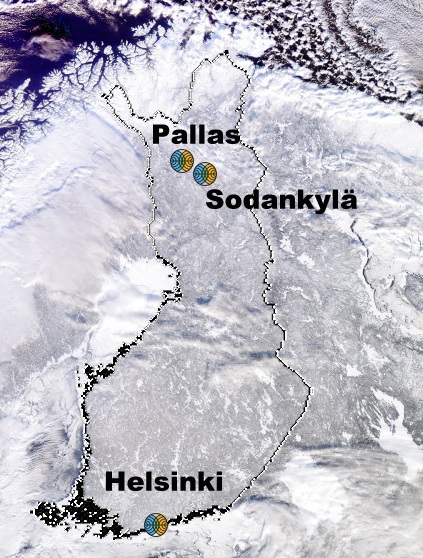 |
Metadata
|
 |
Sodankyla-Pallas
Integrated CryoNet Cluster Information
Stations in This Site
This site is comprised of the following stations:
- Sodankyla Intensive Observation Area (IOA) - CryoNet Station
- Sodankyla Tahtela - CryoNet Station
- Sodankyla Lake Orajarvi - Contributing Station
- Sodankyla Peatland - Contributing Station
- Pallas-Kenttarova - CryoNet Station
- Sodankyla ICOS tower - CryoNet Station
Broad Research Focus
Cryosphere ecosystem processes
Other Networks to Which This CryoNet Cluster Belongs
- WMO GAW: Global Atmospheric Watch
- GRUAN: GCOS Reference Upper Air Network
- GEWEX: Global Energy and Water Cycle Experiment
- NDACC: Network for the Detection of Atmospheric Composition Change
- EU-ICOS: International Carbon Observation System
- TCCON (Total Carbon Column Observing Network): A network of ground-based Fourier Transform Spectrometers recording direct solar spectra in the near-infrared spectral region
- ESA GlobSnow and EUMETSAT H-SAF: Climate databases and near-real-time services for hemispheric snow mapping
- Development of satellite systems for the monitoring of cryospheric processes and Arctic atmosphere: Reference systems and measurements, e.g. for ESA SMOS, ESA CoReH2O, NASA AURA, NASA/Jaxa AMSR-E, NASA MODIS, ESA AATSR
Measurement Methods Used
- WMO Technical Regulations
Data Information
- Are the data quality controlled? No
- How are the data accessible? FTP, HTTP (web), an existing data center
- Data availability (may depend on the variable measured): in real-time, in near real-time, delayed less than one year
Measurements
The measurements made at Sodankyla-Pallas are listed in the following tables. This is a combination of measurements made at the stations within the site, where the start and end years in the tables are the earliest and latest years of measurement. (Note: If End Year is blank, measurements are ongoing.)
Cryosphere Measurements
| Atmosphere Measurements
|
Measurement Notes and Other Measurements
| Category | Description or List |
|---|---|
| Snow | Albedo data (global and reflected solar radiation) from years 1957-1971 can be found from Meteorological Yearbook of Finland. Since 1971 data is digitized. |
| Freshwater ice | Manual measurements |
| Seasonally frozen ground | Soil moisture profile since 2006. Soil moisture continuously since 2011. Soil moisture profile since 2000. |
| Atmosphere | Shortwave radiation from years 1957-1971 can be found from Meteorological Yearbook of Finland. Since 1971 data is digitized. Photosynthetic Photon Flux Density, upwelling and downwelling, since 2005. |
| Hydrology | evaporation, stratospheric water vapour vertical profile soundings, and precipitation measurements. |
| Ecology | CH4 and CO2 flux measurements Tree trunk permittivity since 2018 Tree skin temperature since 2018. |
| Other | Soil (measured parameters): Soil temperature profile, Soil moisture profile, Soil heat flux, Soil respiration Lake ice (Lake Orajarvi): Total ice thickness, white ice layer thickness, ice layers, water surface from the bottom of the ice, snow properties on top of the ice Others: Distributed observations (automatic and manual) covering boreal forests, wetland, and tundra sites (soil moisture (permittivity) and temperature profiles). Brightness temperature at 1.4, 10.65, 18.7, 21, 36.5, 89, 150 GHz since 2009/2012 until 2018, continuous/fragmented Radiance spectrum at 350-1000 nm (2500 nm until 2015) since 2010 . Other observations: Manual and automatic soundings, Satellite reception, Clouds, Radioactivity, Greenhouse gas columns etc. Ice and snow temperature profile, continuous (during wintertime), start year: 2009. Brightness temperature at 1.4, 10.65, 18.7, 21, 36.5 GHz since 2018, continuous/fragmented . |




The Sodankyla facility hosts programs exploring upper-air chemistry and physics, atmospheric column measurements, snow/soil hydrology, biosphere-atmosphere interaction and satellite calibration-validation studies. Due to the warming effect of the Gulf Stream the area is included in the boreal region. However, with regard to stratospheric meteorology, Sodankyla can be classified as an Arctic site, often lying beneath the middle or the edge of the stratospheric polar vortex and in the zone of polar stratospheric ozone depletion. Its strategic location, coupled with ready accessibility from all parts of the world, makes the ARC an excellent base for studying various themes of global change in a northern context. The ARC research sites belong to the Lapland Biosphere-Atmosphere Facility (LAP-BIAT), an infrastructure project through which the EU can fund visiting research groups.
The Pallas Global Atmospheric Watch station focuses on monitoring of the near-surface air chemistry and physics as well as greenhouse gas exchange.